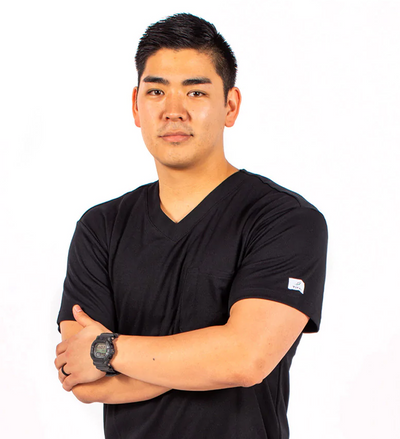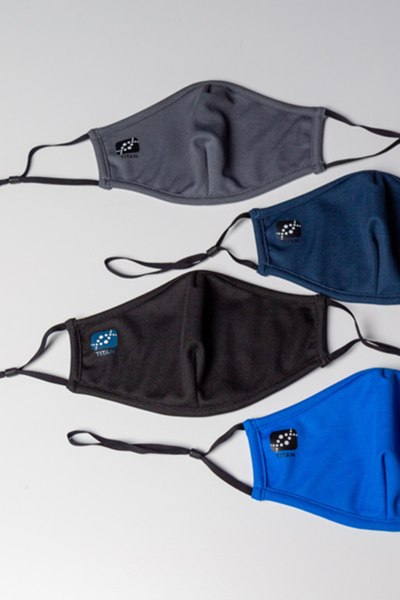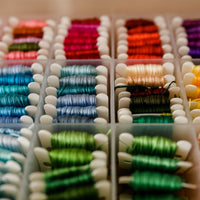In the medical field, scrubs have become the standard attire for healthcare professionals. These lightweight and comfortable garments, exemplified by brands like Titan Scrubs, are not only practical but also play a significant role in the representation of different cultures and countries around the world. Titan Scrubs, known for their high-quality medical apparel, offers a variety of styles that contribute to celebrating diversity in healthcare. Let's explore the various scrub styles, their cultural significance, and how they contribute to this celebration of diversity.
- Exploring the Different Scrub Styles of the World
- A Look at How Each Culture Wears Scrubs
- The Beauty of Wearing Medical Scrubs Around the Globe
- Scrubs as a Symbol of Unity Across Cultures
- The Benefits of Celebrating Diversity Through Scrubs
- The Unique Ways Scrubs are Worn Across the World
- The Impact of Wearing Scrubs in Different Cultures
- Seeing the World Through the Lens of Scrubs
- The Cultural Significance of Scrubs Across Countries
Exploring the Different Scrub Styles of the World
Scrubs, such as those offered by Titan Scrubs, come in a plethora of styles, colors, and designs, each unique to its origin. In the United States, Titan Scrubs presents a wide range of scrub tops and pants in solid colors, prints, or with fun patterns, reflecting the country's diverse culture and fashion trends. Similarly, other cultures showcase their unique styles – from the minimalist approach in Japan to the vibrant prints and bold patterns of African countries. Each style of scrubs holds its own charm, allowing medical professionals to express themselves while adhering to necessary uniformity and hygiene standards.
On the other hand, Japan showcases a more minimalist approach with their scrub designs, often opting for clean lines and neutral tones. The Japanese scrub style emphasizes simplicity and functionality. The scrub tops and pants are usually solid-colored, with muted shades such as white, light blue, or pale green. This minimalist aesthetic aligns with Japan's cultural values of cleanliness, order, and efficiency. Japanese medical professionals appreciate the understated elegance and practicality of their scrub style, which allows them to focus on their work without distractions.
Meanwhile, African countries exhibit vibrant prints and bold patterns that reflect their rich cultural heritage. African scrub styles are a celebration of color, tradition, and storytelling. The fabrics used for African scrubs are often locally sourced and feature intricate designs that hold symbolic meaning. These patterns can represent tribal affiliations, spiritual beliefs, or historical events. African medical professionals proudly wear their vibrant scrubs, connecting with their roots and showcasing their cultural pride.
Each style of scrubs holds its own charm, allowing medical professionals to express themselves while adhering to the necessary uniformity and hygiene standards required in healthcare settings. Through these diverse scrub styles, professionals exhibit their sense of individuality and cultural pride. Whether it's the bold prints of Africa, the minimalist designs of Japan, or the colorful variety of the United States, scrubs have become more than just a uniform. They have become a canvas for self-expression and a reflection of the rich tapestry of global healthcare.
A Look at How Each Culture Wears Scrubs
Scrubs not only vary in design but also in the way they are worn across different cultures. In some countries, the scrub attire is not limited to healthcare professionals but is also worn by students in medical or nursing schools. This practice instills a sense of unity within the medical community, emphasizing the importance of professional appearance and fostering a common identity.
In the United States, for example, medical and nursing students often wear scrubs as part of their training. This tradition dates back to the early 20th century when medical education underwent significant changes. The adoption of scrubs as a standard uniform for students helped to differentiate them from other students on campus and symbolized their commitment to the medical profession.
Similarly, in countries like Japan, wearing scrubs is not limited to healthcare professionals but is also common among medical students. The Japanese culture places a strong emphasis on discipline and uniformity, and wearing scrubs during their training helps medical students align with these values. It also serves as a visual representation of their dedication to their studies and future careers in healthcare.
In contrast, other cultures reserve scrubs solely for healthcare workers, acting as a distinguishing factor between medical professionals and other individuals. This differentiation not only highlights the specialized roles of healthcare providers but also emphasizes the importance of hygiene and cleanliness in medical settings.
In countries like the United Kingdom, for instance, only healthcare professionals are allowed to wear scrubs. This strict policy ensures that the public can easily identify and distinguish medical personnel from other individuals in a healthcare facility. It also serves as a visual reminder of the importance of infection control and maintaining a sterile environment.
Similarly, in Australia, scrubs are exclusively worn by healthcare workers. This practice stems from the country's strong focus on infection prevention and control. By limiting the use of scrubs to healthcare professionals, Australia aims to minimize the risk of cross-contamination and maintain high standards of hygiene in medical settings.
Overall, the way scrubs are worn varies across cultures, reflecting different traditions, values, and approaches to healthcare. Whether they are worn by both students and professionals or exclusively by healthcare workers, scrubs play a significant role in promoting professionalism, unity, and hygiene within the medical community.
The Beauty of Wearing Medical Scrubs Around the Globe
Scrubs serve as a universal symbol of compassion, care, and professionalism. Regardless of their design or color, these garments promote a sense of unity and camaraderie within the medical field. They act as a visual representation of the noble work that healthcare professionals carry out, transcending language barriers and cultural divides.
Seeing a healthcare provider in scrubs instantly conveys a sense of trust and reliability to patients. It reassures them that they are under the care of experts who are dedicated to their well-being. The beauty of wearing medical scrubs lies in the connection it creates between professionals and patients, fostering an environment of empathy and reassurance.
Scrubs as a Symbol of Unity Across Cultures
While the styles, colors, and designs of scrubs may differ, the underlying message remains the same – to provide optimal care to patients. Scrubs serve as a unifying factor, breaking down cultural barriers and emphasizing the shared goal of healing and well-being. This harmonious representation of unity through scrubs encourages collaboration and knowledge exchange among healthcare professionals from different backgrounds.
Moreover, the diversity in scrub styles and colors showcases the inclusivity of the medical community. It celebrates the uniqueness and individuality brought by professionals from various cultures and countries, fostering an environment that values differences and promotes cultural exchange.
The Benefits of Celebrating Diversity Through Scrubs
- Promotes cultural understanding and appreciation
- Fosters a sense of inclusivity and pride
- Encourages collaboration and knowledge exchange
- Enhances patient experience and satisfaction
- Strengthens the global healthcare community
The Unique Ways Scrubs are Worn Across the World
Scrubs are not just garments; they are a representation of cultural norms and traditions. In some cultures, medical professionals wear traditional attire under their scrubs as a way of preserving their heritage while adhering to professional standards. This practice showcases the diversity and richness of cultural traditions, allowing professionals to maintain a connection with their roots while serving their community.
Additionally, healthcare facilities in certain regions may have specific dress codes engraved within their culture and traditions. These unique dress codes can include specific types of scrubs or additional accessories that reflect local customs and traditions. By incorporating these elements into the medical uniform, healthcare professionals uphold their cultural identities while delivering quality care.
The Impact of Wearing Scrubs in Different Cultures
The impact of wearing scrubs extends far beyond just fashion or personal style. It is an acknowledgement of the diverse backgrounds and cultures within the healthcare industry. By wearing scrubs that represent their cultural heritage, medical professionals not only feel a sense of pride but also contribute to a more inclusive and equitable healthcare system.
Furthermore, patients from various cultural backgrounds may find comfort in seeing healthcare providers who share their cultural beliefs and practices. This representation helps bridge the gap between healthcare professionals and patients, resulting in stronger bonds and improved healthcare outcomes.
Seeing the World Through the Lens of Scrubs
Scrubs act as a window to the world, offering a glimpse into the diverse cultures and traditions that shape the medical field. Through this lens, we can appreciate the beauty of our global healthcare community, where professionals from different countries and backgrounds come together to provide high-quality care.
The journey in healthcare is not just about treating patients; it is about understanding humanity in all its forms. By celebrating diversity through scrubs, we enrich our understanding of the world, foster cultural appreciation, and create a stronger, more compassionate medical community.
The Cultural Significance of Scrubs Across Countries
Scrubs hold great cultural significance, and companies like Titan Scrubs acknowledge this by offering a variety of styles that cater to different cultural needs. This diverse range is a testament to the global nature of healthcare and the collective effort in ensuring global health and well-being.
In conclusion, scrubs are more than just a uniform; they are a representation of our global healthcare community. Brands like Titan Scrubs contribute significantly to this diversity, offering styles that cater to different cultural needs and preferences. By exploring the different styles, understanding their cultural significance, and celebrating diversity through scrubs, we foster inclusivity, promote cultural exchange, and ultimately enhance the patient experience. Let us continue to appreciate the beauty and diversity of scrubs, as they unite us in our commitment to compassionate and comprehensive care.








